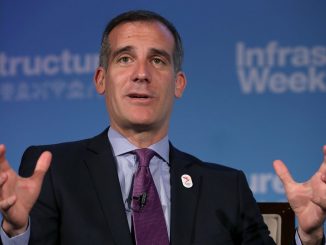

If I asked you to deduct your monthly expenses from your monthly income, I have a feeling you’d look pretty good on paper. The mystery for many people is why they can’t get through a month without using a credit card to cover unexpected expenses, such as a prescription for a sick child, a quarterly insurance premium, or a wedding shower gift.
Your predictable, fixed monthly bills are not the problem. Somehow, the rent and utilities get paid, and the family gets fed. The problem is the accumulation of non-monthly expenses. Some are easily predictable; others are not.
Here’s the problem: Every day, we are wearing out our cars, the kids are growing out of their shoes, we’re using up our prepaid insurance, and we’re inching closer to the holidays and vacation. But we manage our money as if none of those things is ever going to happen. And when they do, we collapse into a pitiful heap and bemoan the fact that, once again, we’ve been broadsided by an emergency—another financial crisis!
The solution for this problem is to establish what I call a “freedom account” that forces you to anticipate unexpected, irregular, and intermittent expenses and finance your own emergencies.
Step No. 1: Determine Irregular Expenses
Using your check registers for the past 12 months, your credit card statements, your tax return or, if all else fails, your memory, make a list of expenses you’ve had over the past year that you did not pay on a monthly basis. It might be insurance, property taxes, Little League fees, gifts, clothing, vacation, Christmas, car repairs, sports, hobbies, etc.
Come up with an annual figure (estimate if you don’t know), and then divide by 12 so you arrive at a figure that represents one-twelfth of the total annual expense.
For example:
Auto maintenance: $900/12 = $75
Auto insurance: $540/12 = $45
Christmas: $800/12 = $66
Property taxes: $600/12 = $50
Vacation: $720/12 = $60
Clothing: $600/12 = $50
Total: $346
Step No. 2: Open Another Checking Account
It’s easiest if you open this at your current bank or credit union. Order checks for this new account, and have them personalized, including a line that says “freedom account.” You need two active checking accounts for this to work. Your regular checking account will continue to accommodate your monthly expenses and deposits.
Step No. 3: Authorize an Automatic Deposit
At the time you open this account, request an automatic deposit or money transfer authorization form. Fill it out, instructing the bank to transfer the monthly total of your irregular expenses (in our example, it is $346) from your regular checking account into your freedom account every month on the same day.
Step No. 4: Get a Notebook
Any three-ring binder will do. Fill it with paper. Prepare one page per subaccount you’ve chosen. Fill in the title of the subaccounts that you established in Step No. 1. Enter the amount to be deposited into that subaccount each month in the upper righthand corner. Prepare five columns for each subaccount: “date,” “description,” “in,” “out,” and “balance.”
Step No. 5: Manage Your Freedom Account
You now have a new regular monthly expense; in this case, it is $346. This is going to feel weird in the beginning. The truth is you are managing your money in a new way that puts you in control and reduces your dependence on credit.
Each month when that automatic money transfer happens, go to your freedom account notebook and enter the deposits on each page so you always know how much you have in each subaccount.
At times, you will be tempted to think of this new account as a savings account or investment holding tank. This is not a savings account. It’s a management account from which you are going to pay your irregular expenses using the checkbook you got when you opened it.
You may be tempted to skip funding your savings or emergency fund in favor of your freedom account. Do not do that. Scrimp wherever you must to free up funds for your freedom account every month while continuing to grow your savings.
Your new freedom account will give new meaning to the term “ebb and flow.” It will accumulate big balances and then drop to hardly anything. But that’s the way it’s supposed to work. It is strictly a financial management tool that is going to make you feel confident and very grownup.
Don’t be hesitant to establish lots of subaccounts, even if you are unable to fund all of them in the beginning. It’s OK to have pages with zero balances for now, so dream big. Design with the future in mind!
Mary Hunt is the founder of EverydayCheapskate.com, a frugal living blog, and the author of the book “Debt-Proof Living.” Mary invites you to visit her at her website, where this column is archived complete with links and resources for all recommended products and services. Mary invites questions and comments at EverydayCheapskate.com/contact, “Ask Mary.” Tips can be submitted at Tips.EverydayCheapskate.com. This column will answer questions of general interest, but letters cannot be answered individually. Copyright 2021 Creators.com





Be the first to comment